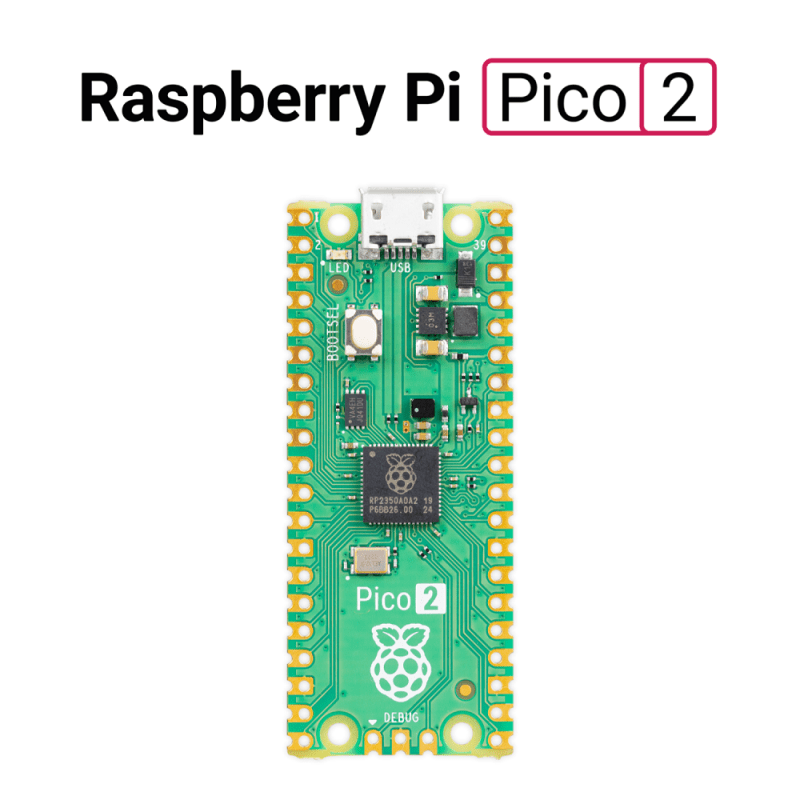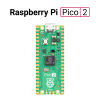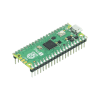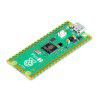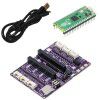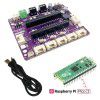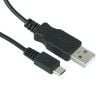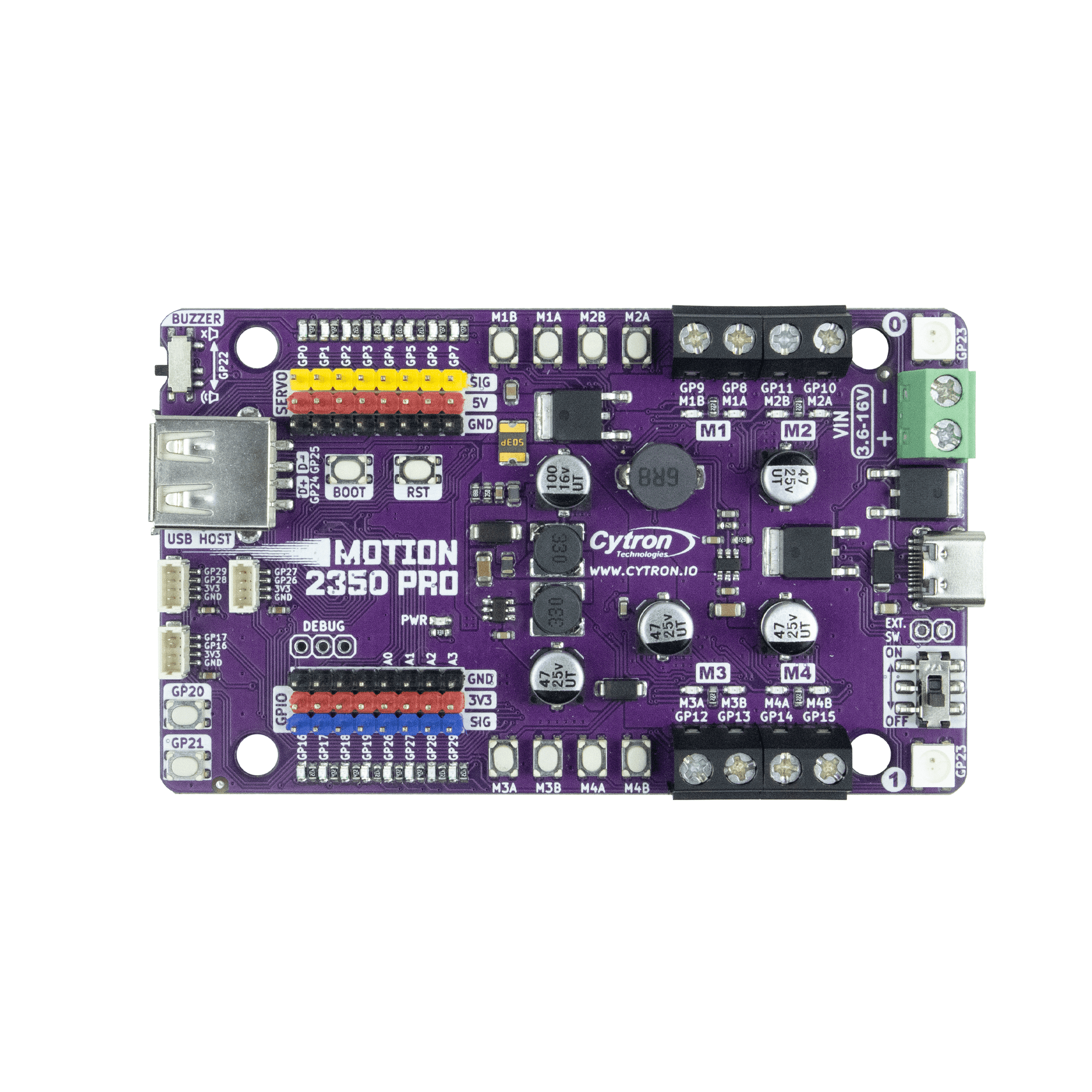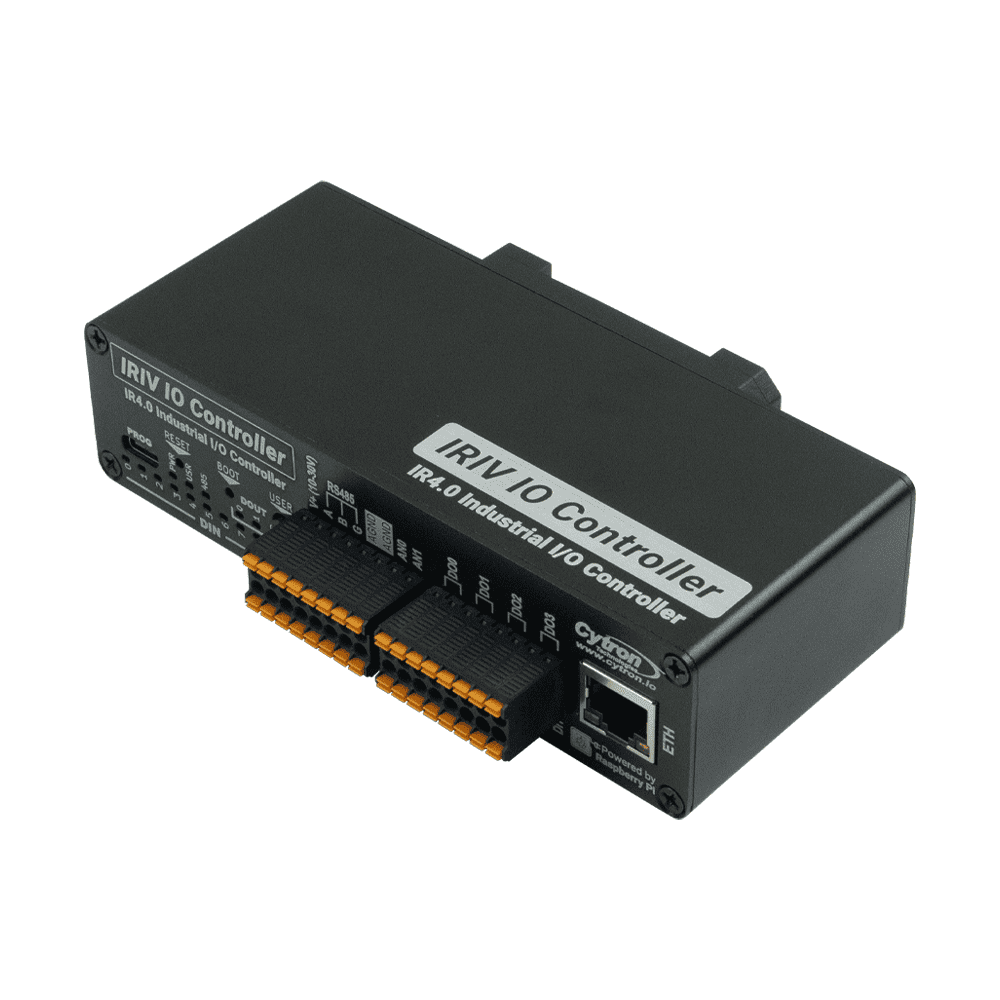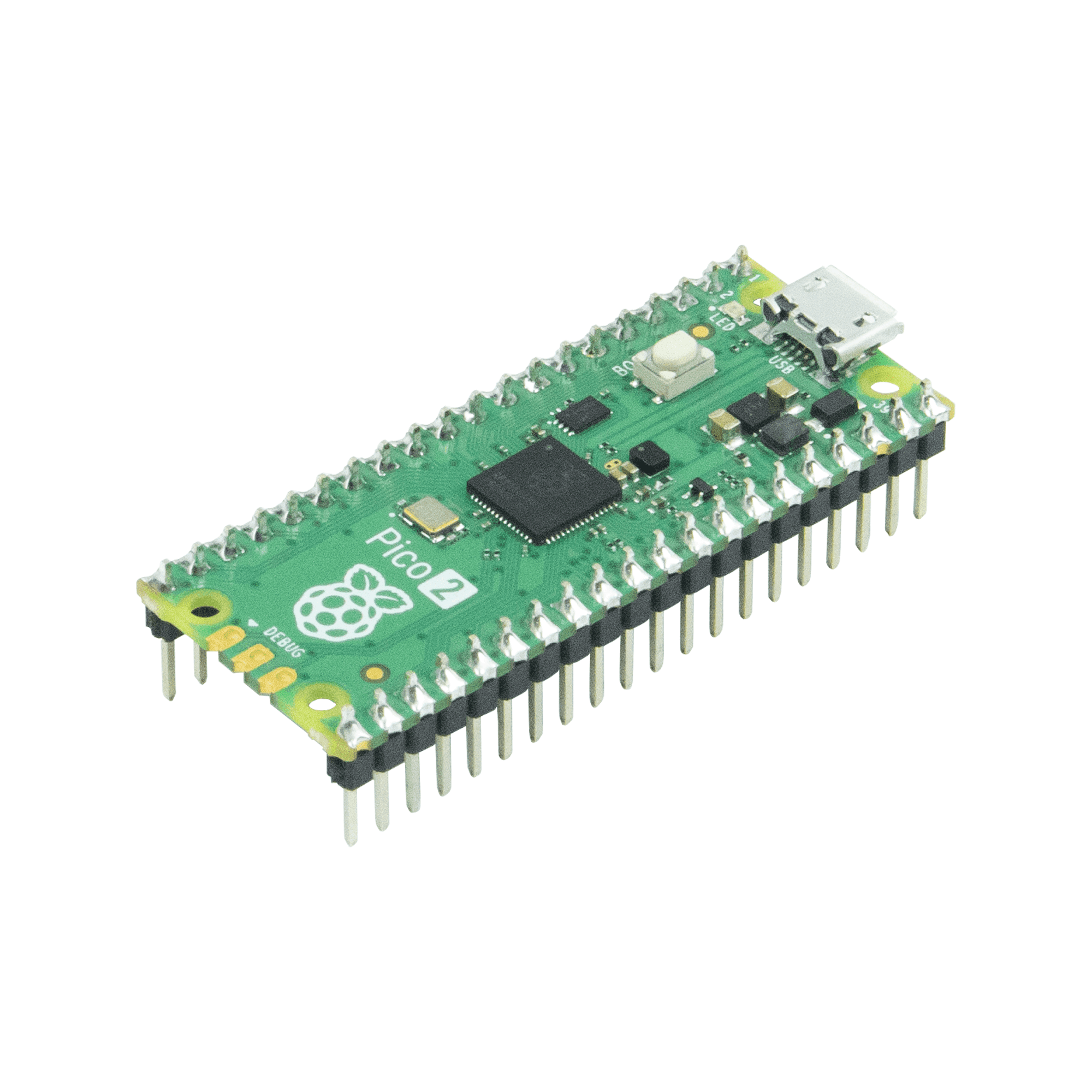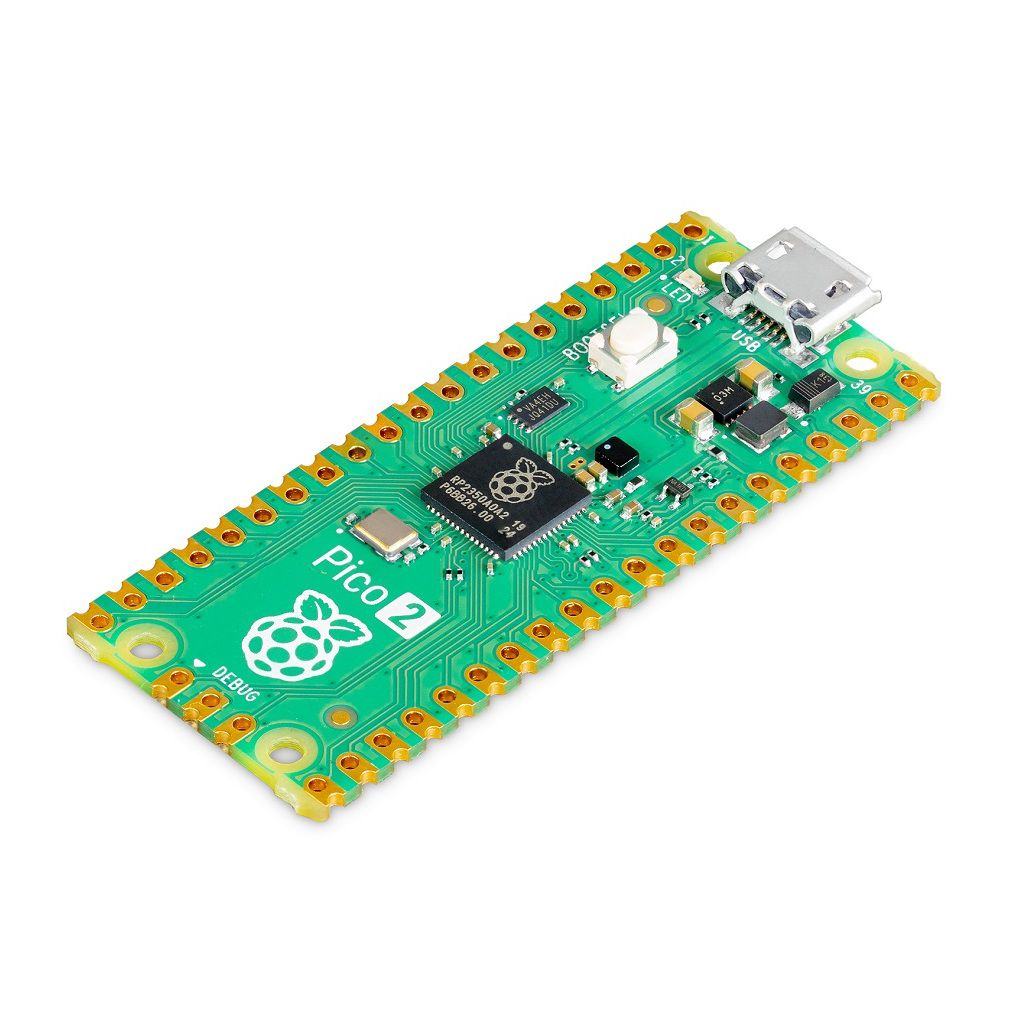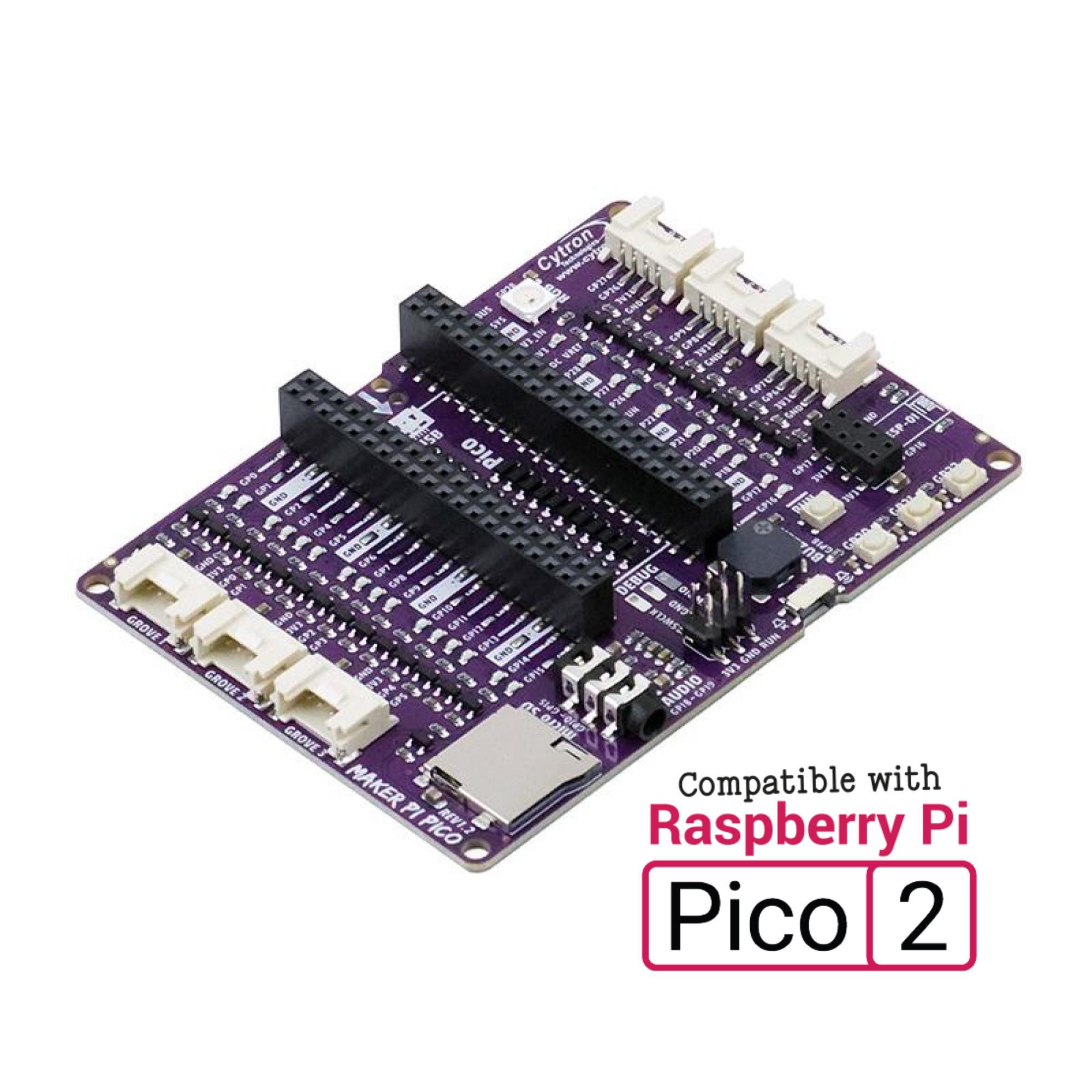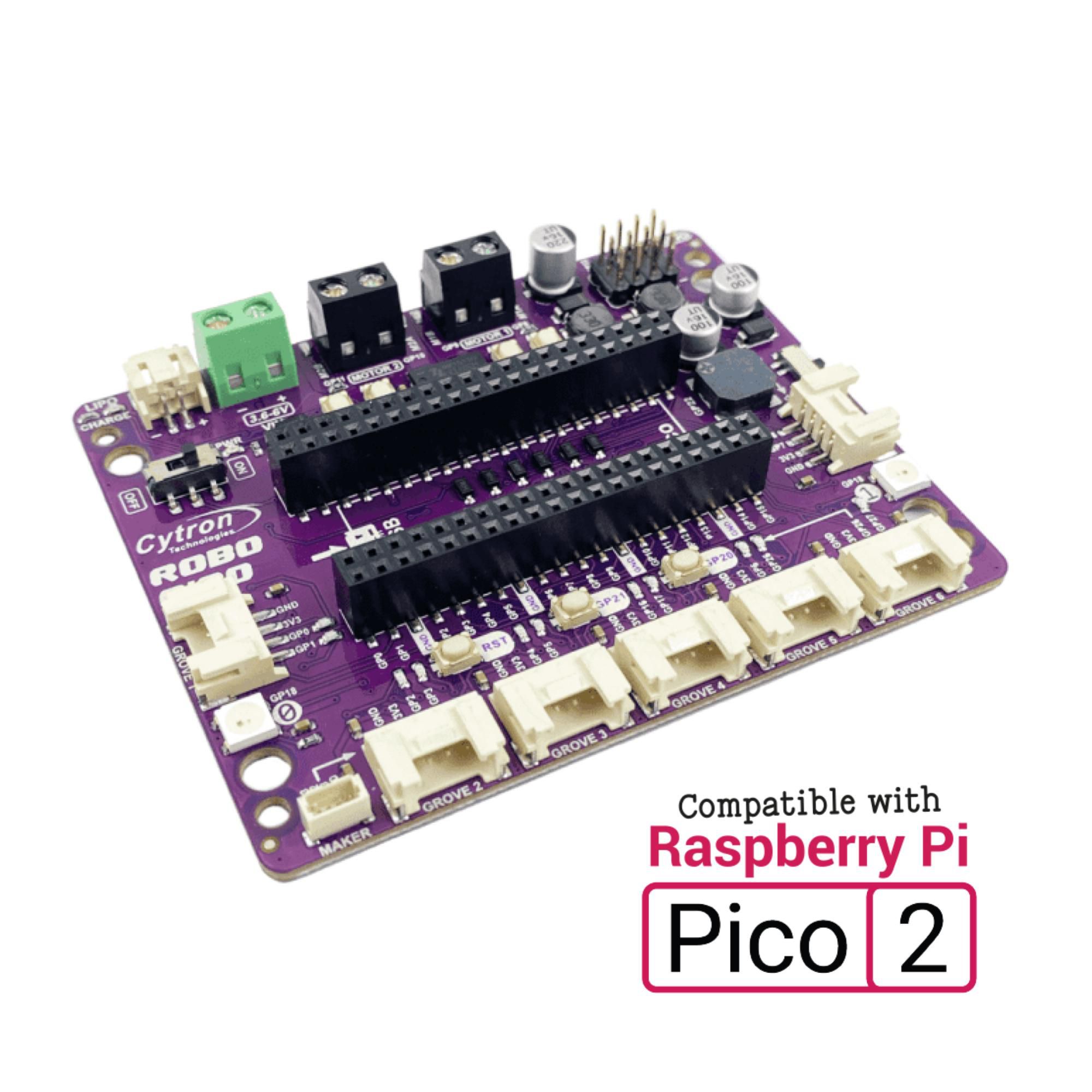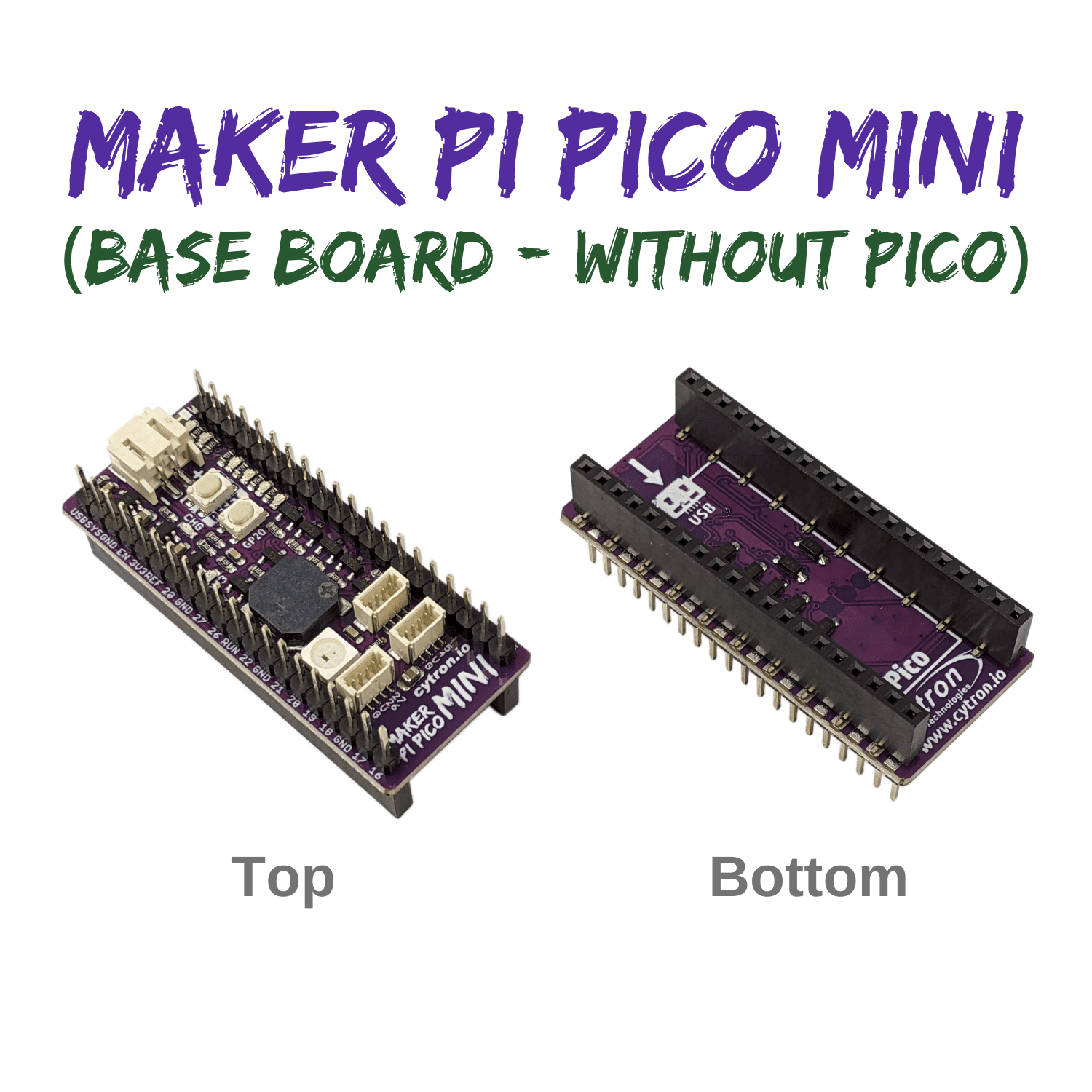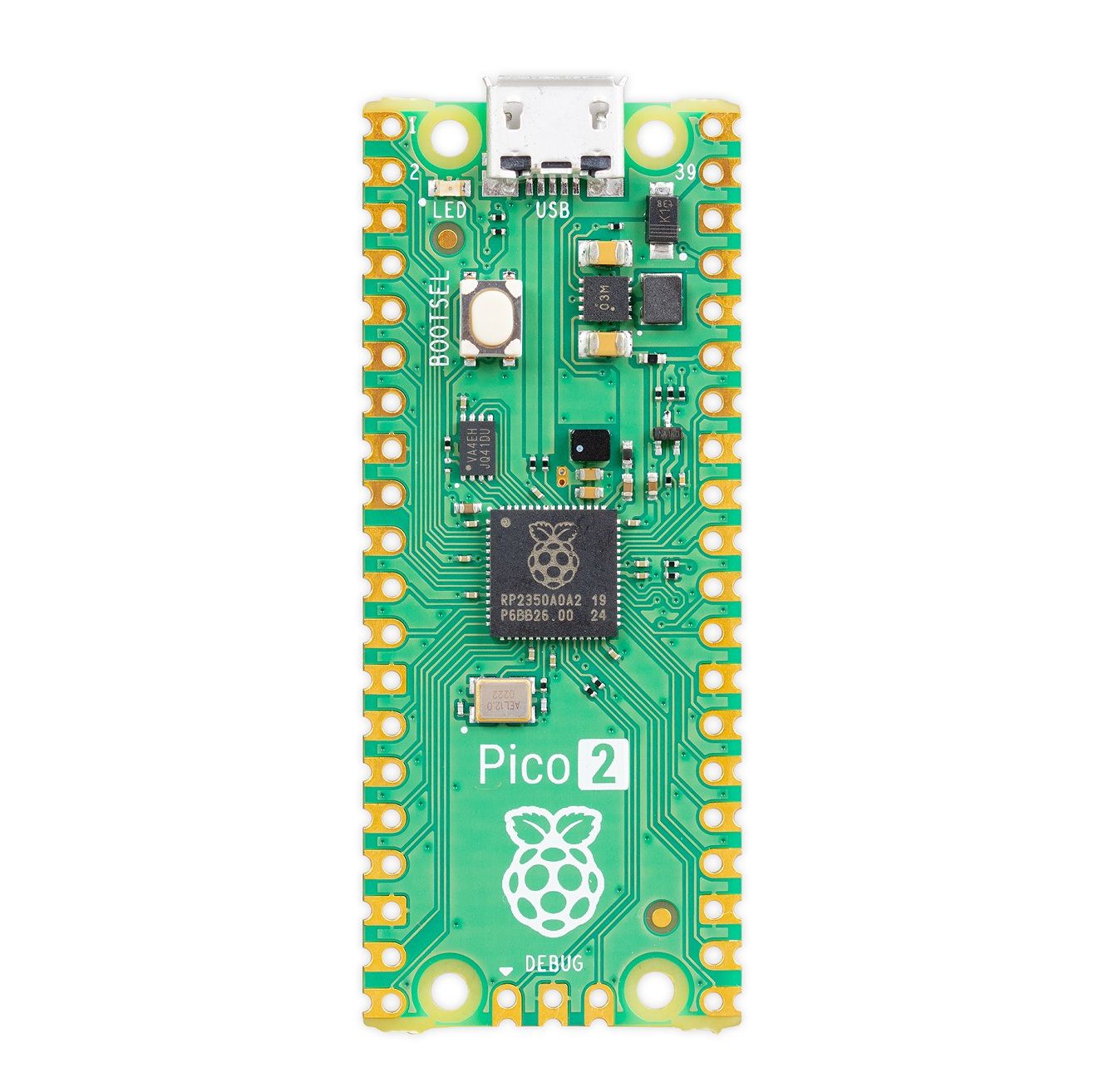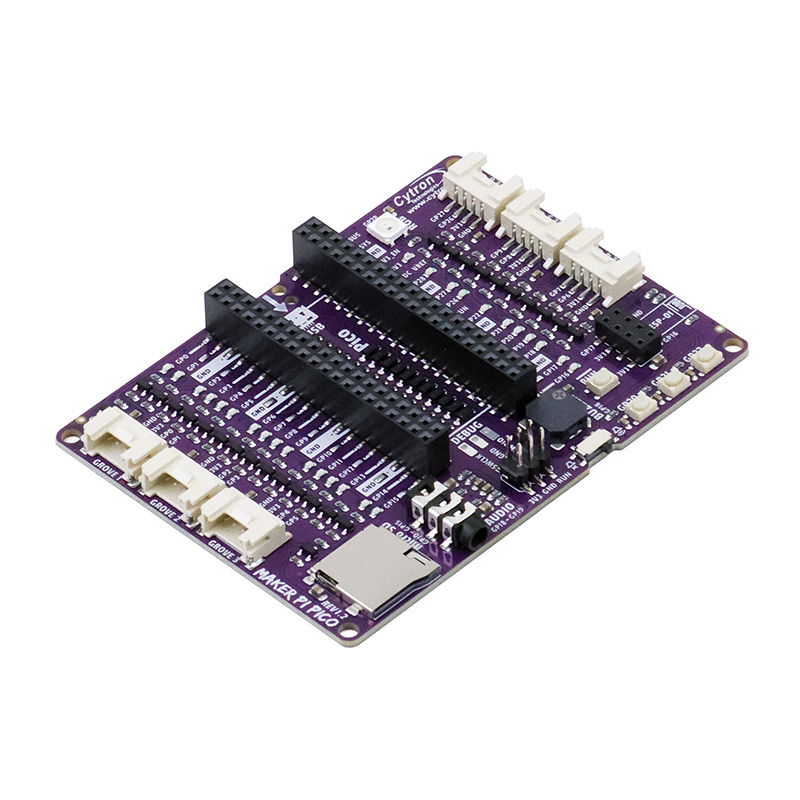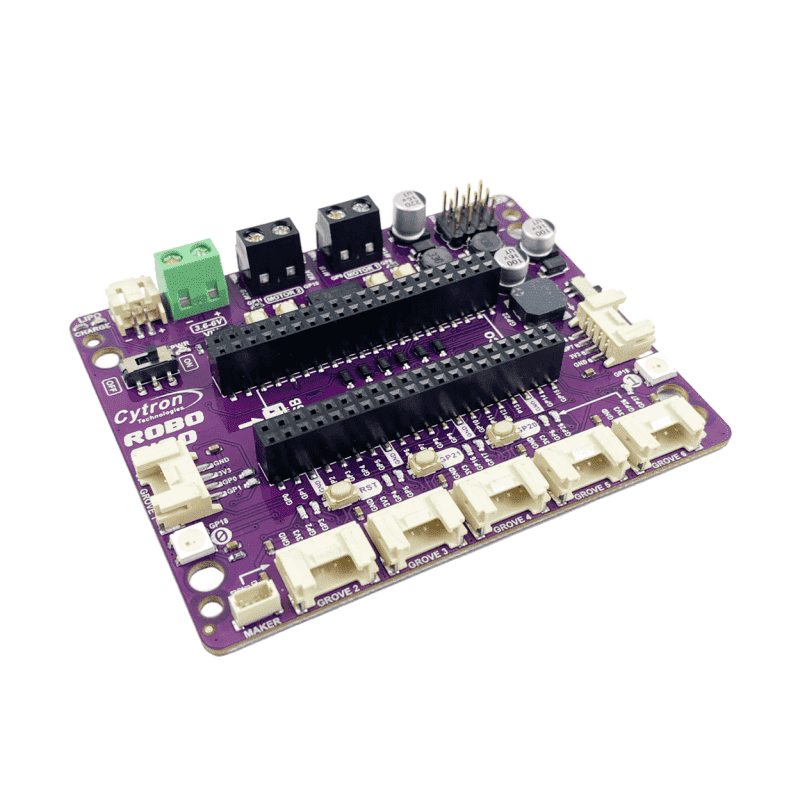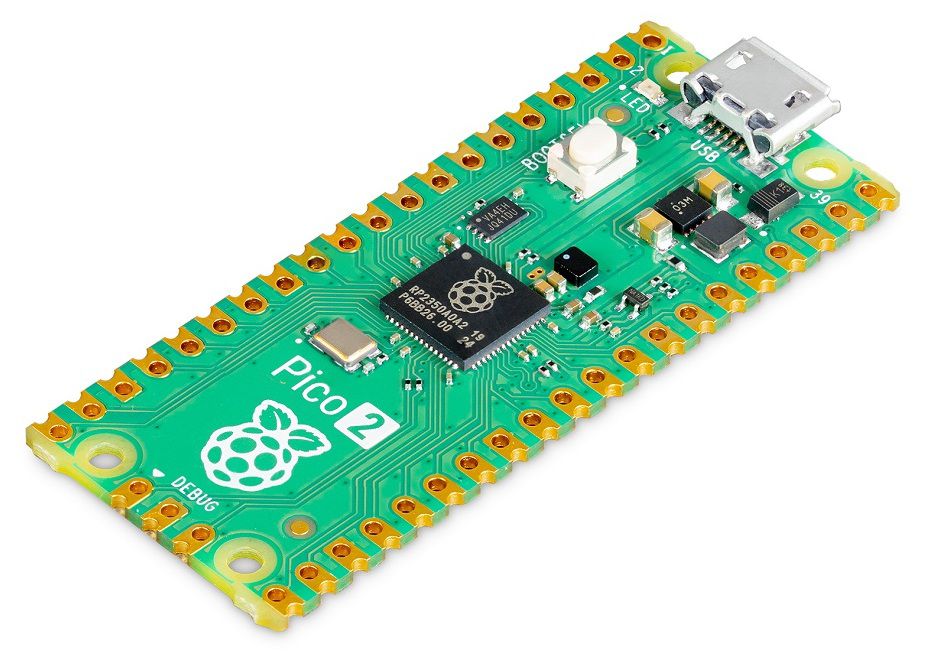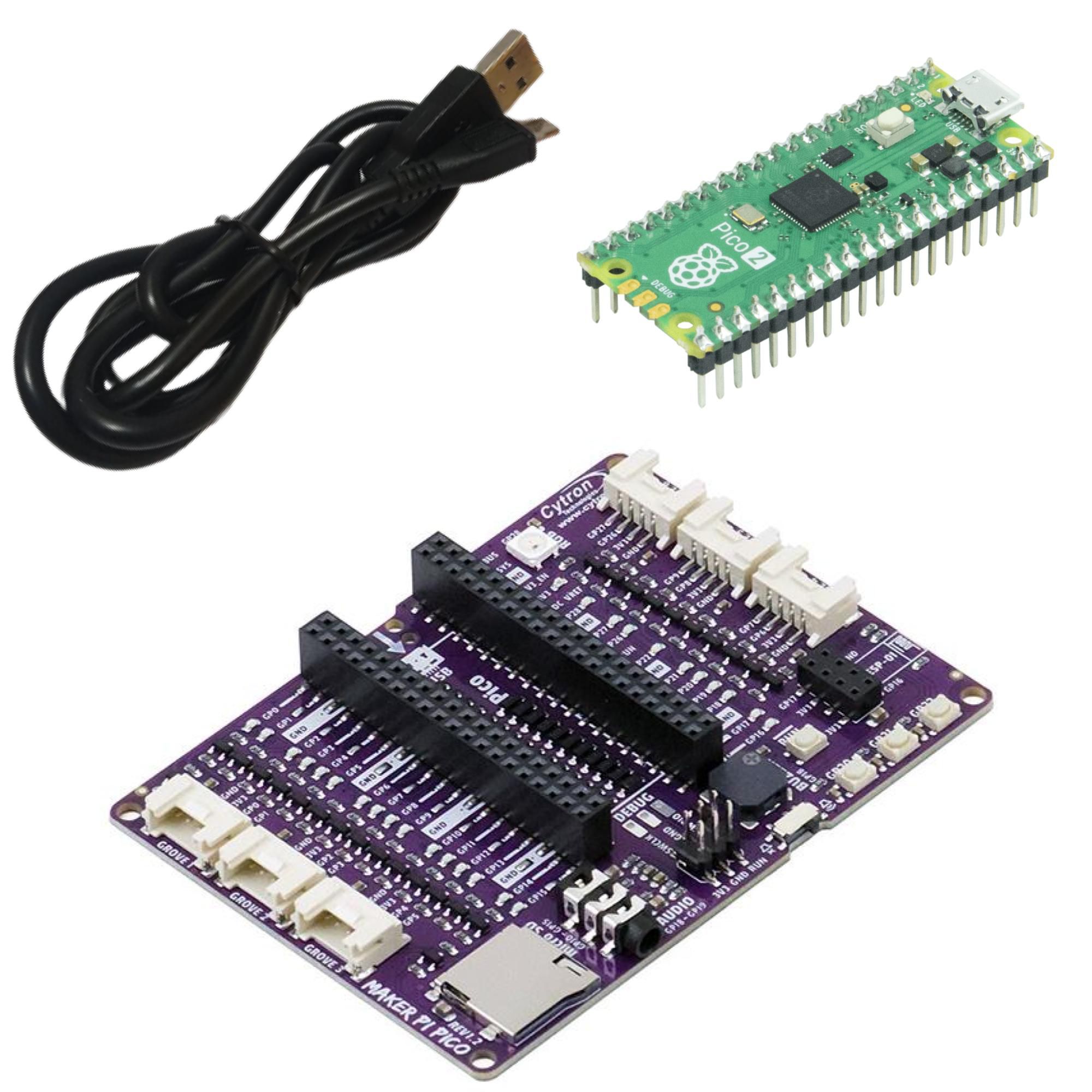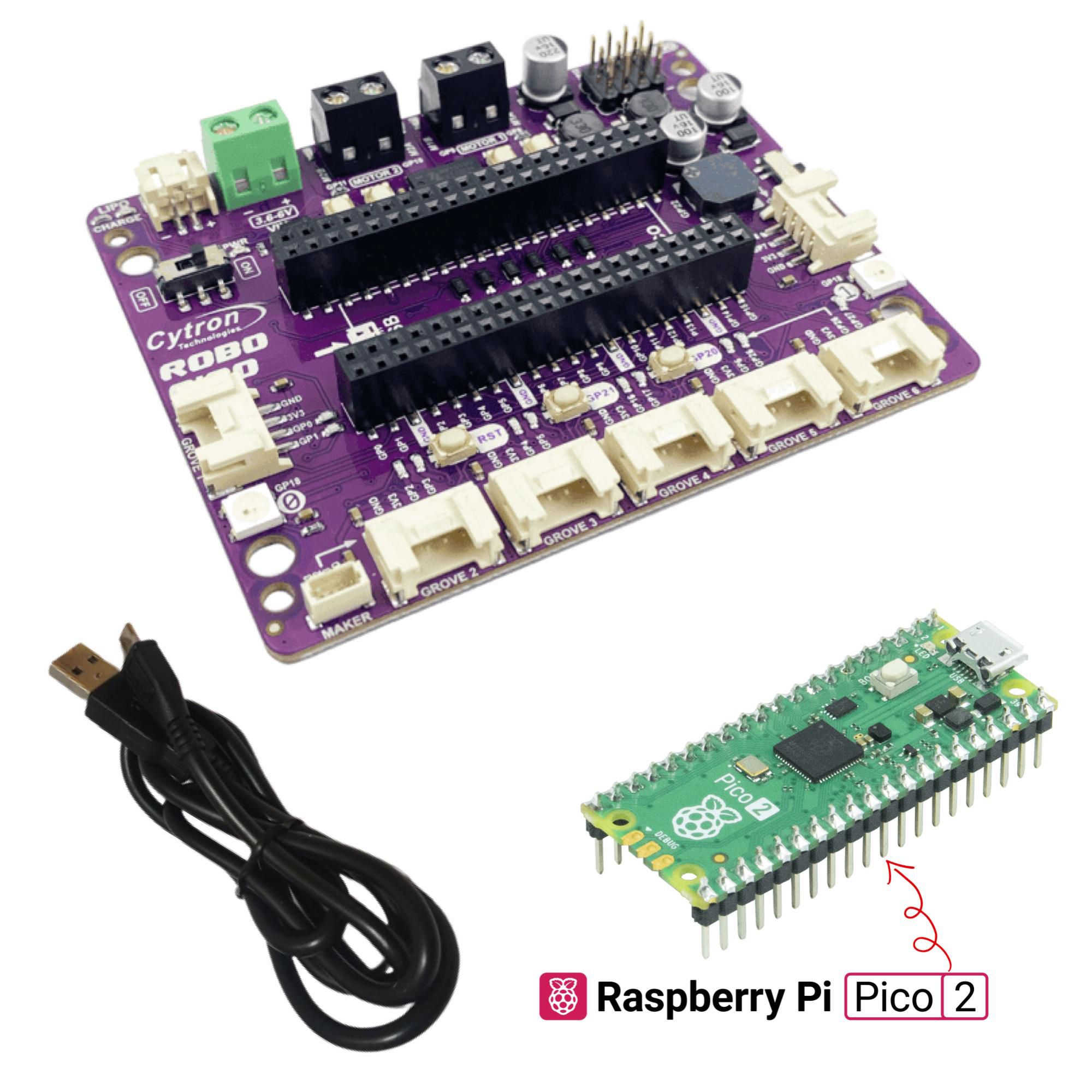Note: This is Raspberry Pi Pico 2, the new MCU board from the Raspberry Pi that is based on the latest RP2350.
Note: As one of the Raspberry Pi RP2350 Launching Partners, Cytron Technologies has developed and produced two innovative products based on the new microcontroller. You are welcome to check them out:
Note: There are two options: (please choose your preference)
- Raspberry Pi Pico 2 with PRE-SOLDERED male headers by Cytron Technologies. It is breadboard-friendly, plug and use!
- Raspberry Pi Pico 2 without header, SMD friendly.
Raspberry Pi Pico 2
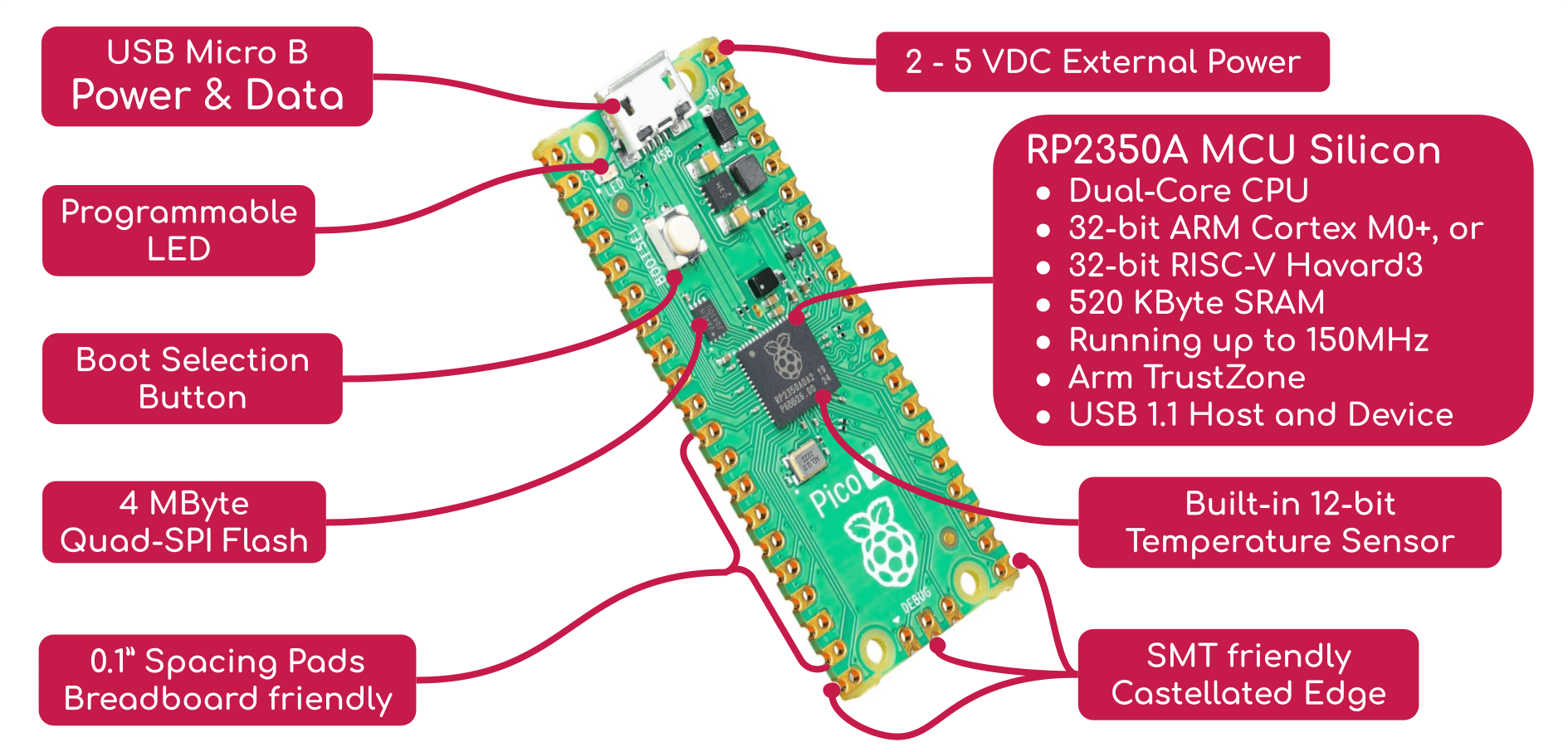
Released on the 8th of August 2024, the Raspberry Pi Pico 2 is the 2nd Microcontroller Development Board from Raspberry Pi Foundation. It is also based on the 2nd Microcontroller IC/Silicon - RP2350A, designed and produced by Engineers from the Raspberry Pi team.
Enhanced Microcontroller Development Board
2nd generation of Raspberry Pi Pico board comes with the following enhancements:
- CPU: Two Dual-Core CPU:
- Dual ARM Cortex-M33 Cores
- Dual RISC-V Hazard3 Cores
- System clock up to 150MHz
- SRAM: 520KByte
- 4MByte QSPI Flash Memory
- Comprehensive Security: ARM TrustZone, 8KB on-chip OTP Storage, Secure boot
- XIP v2 for better flash memory interface
- 12 PIO state machines (3 blocks)
We probably have lots of microcontrollers in our house already. For example, a washing machine is controlled by a microcontroller; most likely our watch is too; there is also one in a microwave. Of course, all these microcontrollers already have their programs for the applications. This Raspberry Pi Pico is a microcontroller board that can perform physical computing and can be easily reprogrammed over a USB connection.
Gary from the Gary Explains channel helps to highlight the boost of Pico 2 or RP2350:
Pin-to-Pin Compatible with 1st Generation of Pico
The Raspberry Pi Pico 2 maintains complete pin-to-pin compatibility with its predecessor, the Raspberry Pi Pico. This ensures a seamless transition for existing projects and carrier boards, allowing users to leverage their existing investments and expertise. Developers can effortlessly migrate their code and hardware designs to the new Pico 2, benefiting from enhanced performance and expanded capabilities without the need for extensive modifications. We have tested the Raspberry Pi Pico 2 on the following boards and it works effortlessly:
Work Seamlessly with Raspberry Pi Computer

You can always connect the Raspberry Pi Pico to any preferred computer with Windows, macOS, and Linux that supports Python 3.0, yet connecting it with the Raspberry Pi Single Board Computer will be perfect as the same team designs it. The official Operating System, Raspberry Pi OS comes pre-installed with Thonny Python IDE which is ready for you to get started writing MicroPython code for Pico. If you are using another OS (Windows, macOS, or other Linux distribution), please visit https://thonny.org/ to download the IDE and install it.
A More Powerful MCU Dev Board
Dual-Core ARM Cortex-M33
Raspberry Pi Pico comes with dual ARM Cortex-M0+, while the new Pico 2 comes with a Dual-Core ARM Cortex-M33 and a Dual-Core RISC-V Hazard3. Flexible clocking system, with configurable up to a maximum speed of 150MHz! This tiny MCU comes with a whopping 520 Kbyte of SRAM, an external QSPI Flash with a capacity of 4 MByte, and enhanced eXecute in Place (XIP v2). Larger RAM and Flash size enable you to write high-level programming languages like MicroPython and CircuitPython for Raspberry Pi Pico 2.
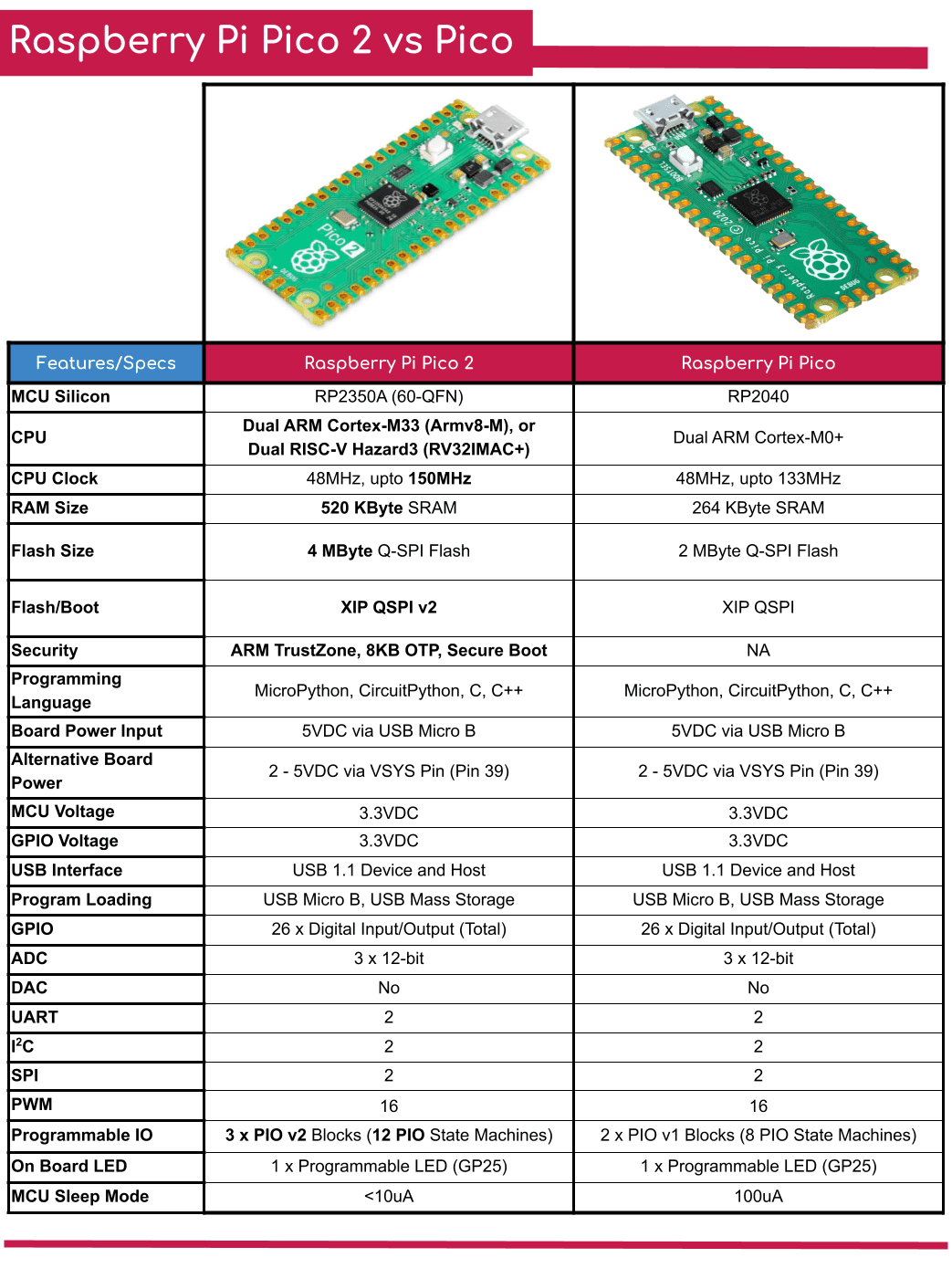
The Highlights:
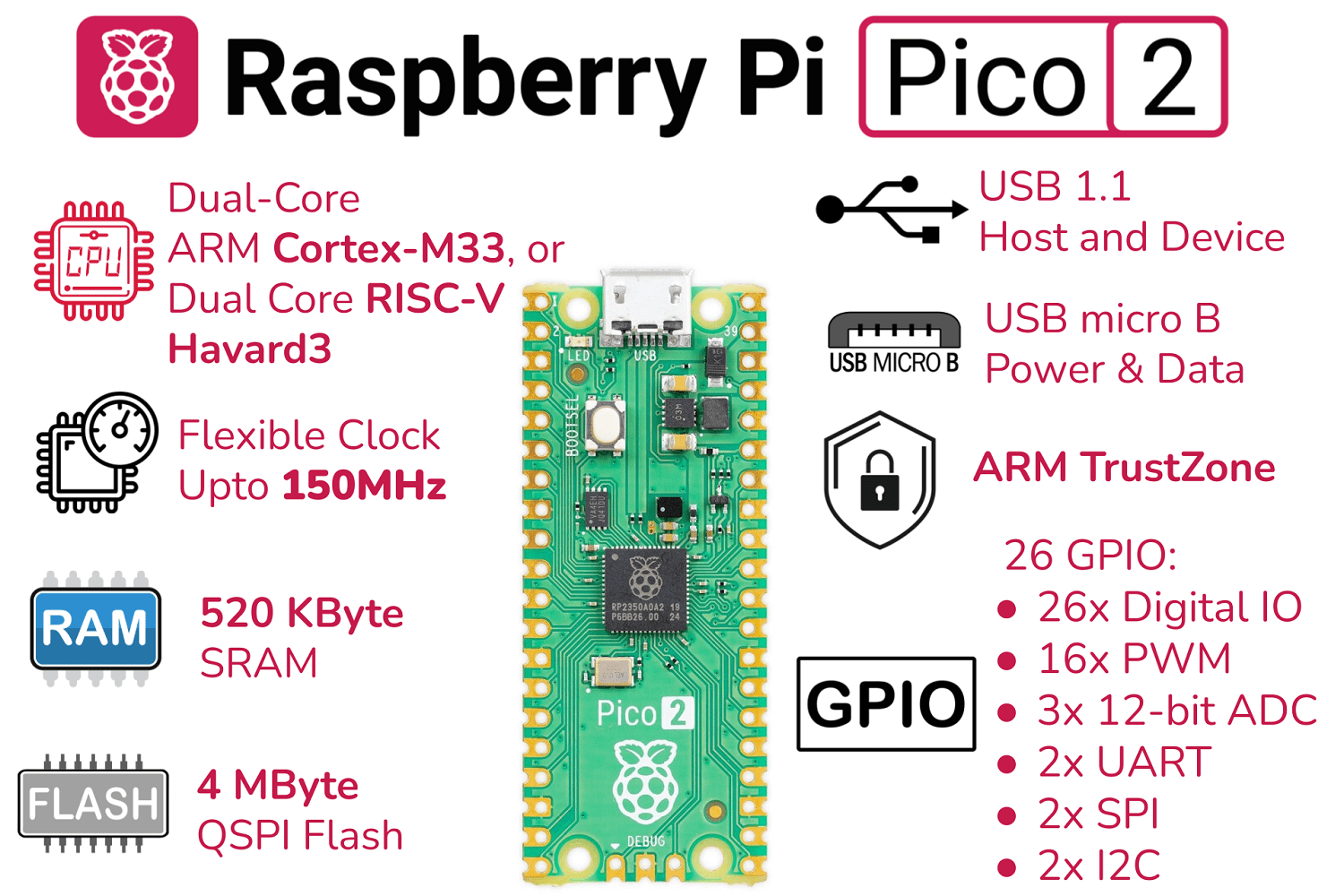
The New MCU Series by Raspberry Pi
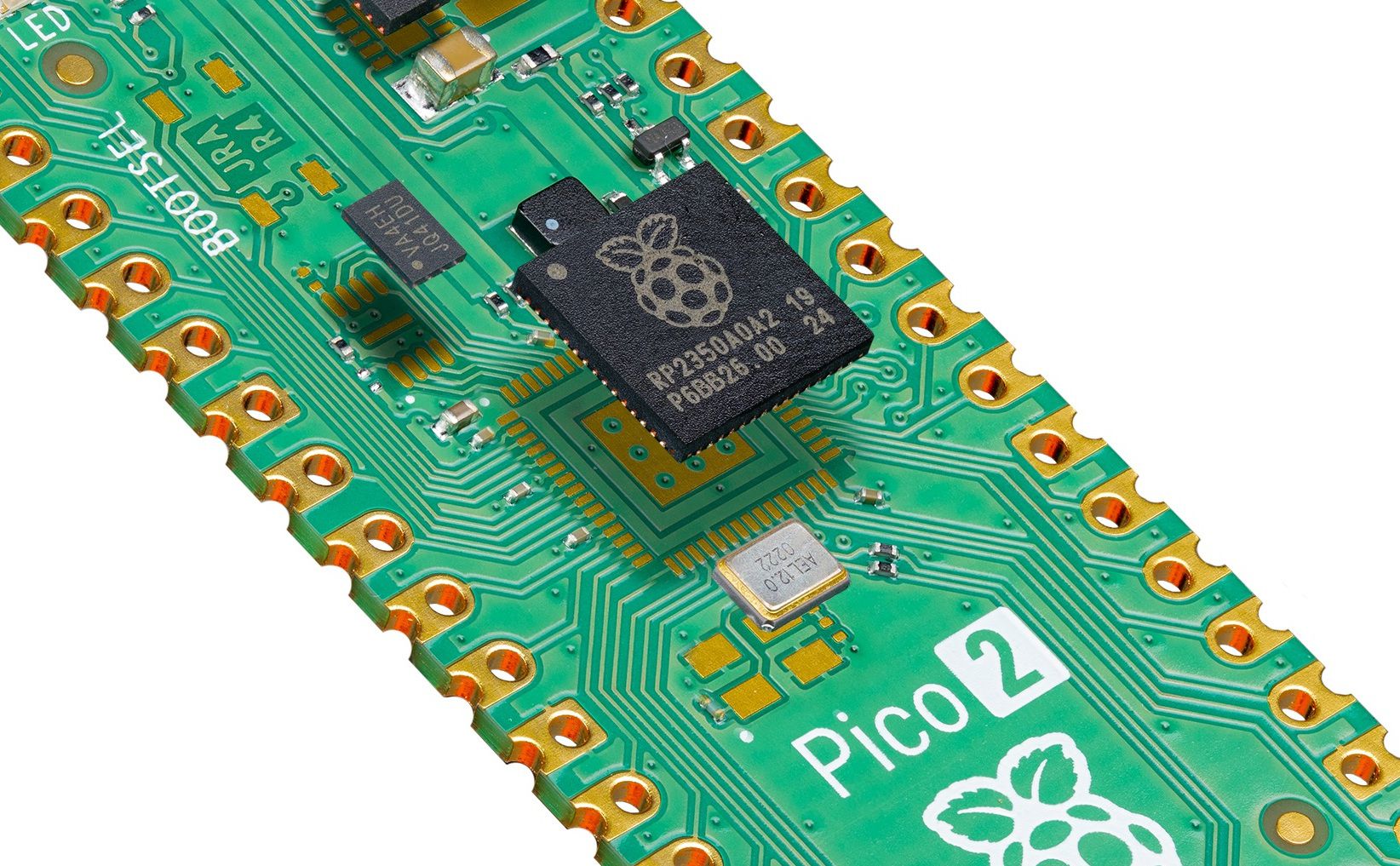
Compact and Ready to be Mounted into the Product
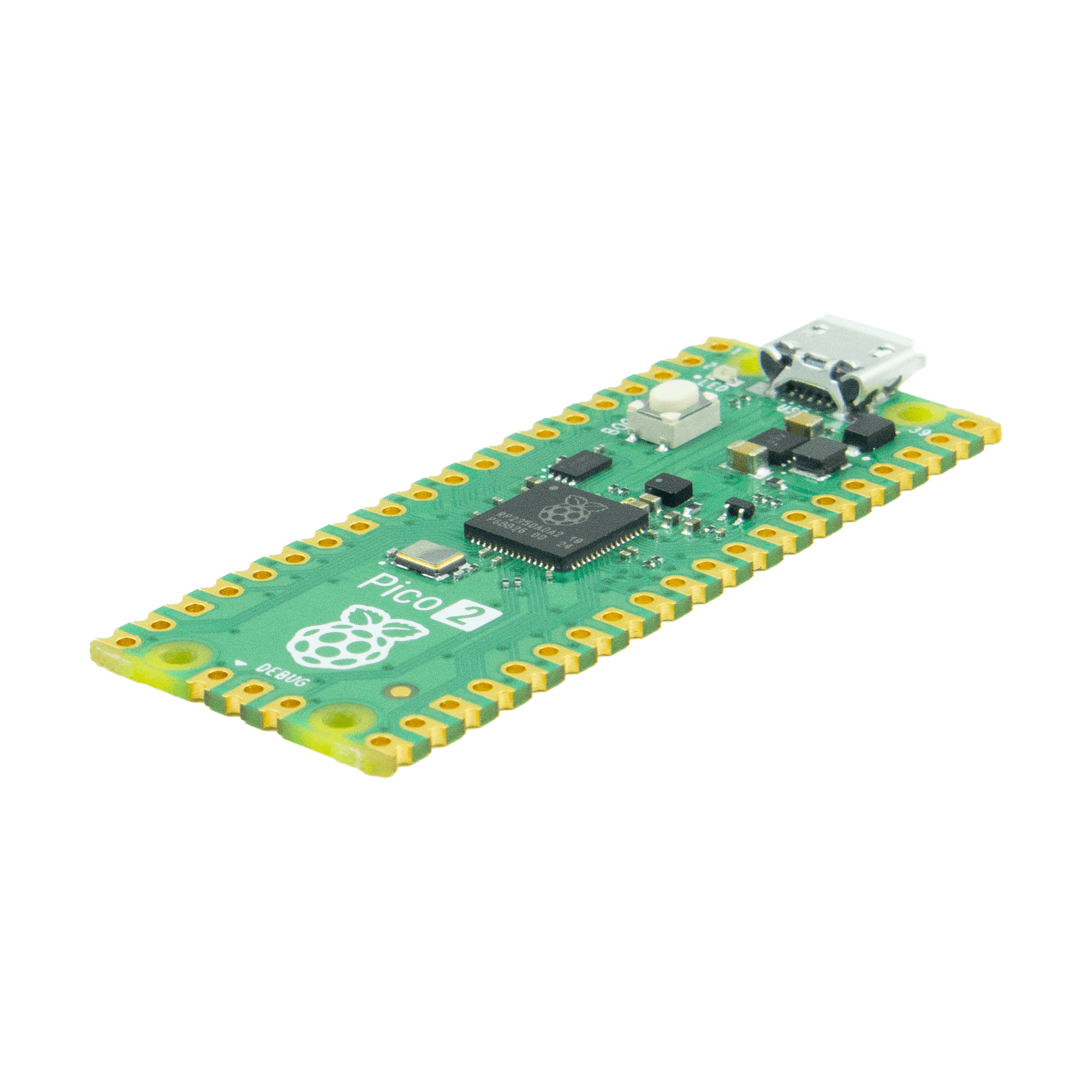
Raspberry Pi Pico 2 preserves the good of its presuccesor, it is ready to be embedded in any product out of the box. If you choose the version without pre-soldered headers, it is ready for SMT (Surface Mount Technology). Raspberry Pi Pico 2 is extended out to a 40-pin 21x51 DIP (Dual Inline Package) style, 1mm thick PCB with 0.1" (100mil) through-hole pins. The pins are further extended to the PCB edge with a castellated circuit board. This enables it to be soldered to another PCB board without the need for extra header pins, making it a smaller and more compact finished product. Awesome!
A good example is Cytron’s Maker Pi Pico (1st generation of Pico):
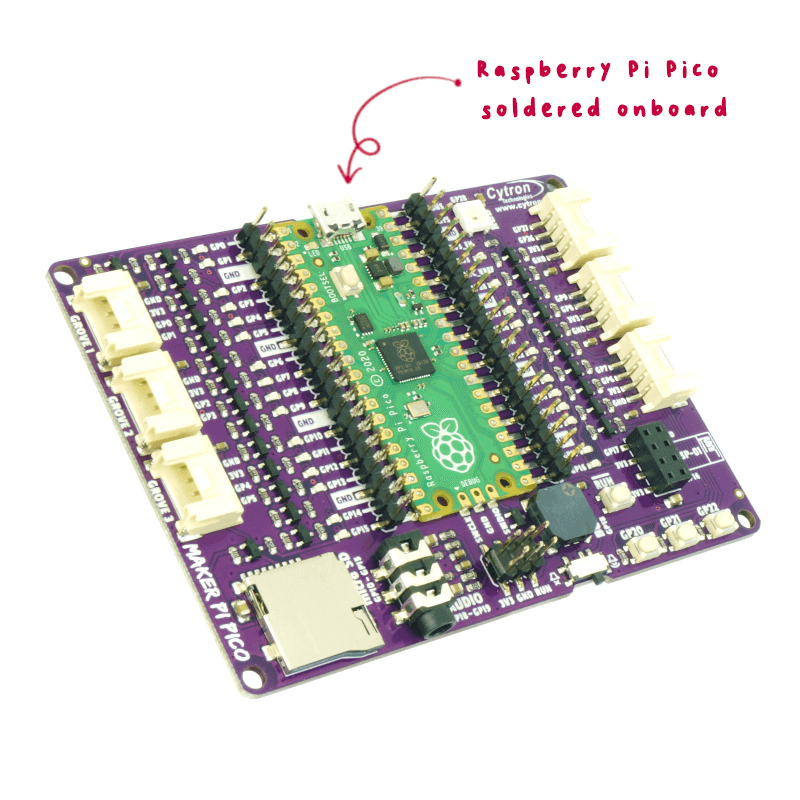
Meanwhile, the version with pre-soldered headers is breadboard-friendly, so students, makers, and engineers can use the Raspberry Pi Pico 2 on a breadboard or any standard PCB board for development or prototyping.
USB Micro B for Power and Data
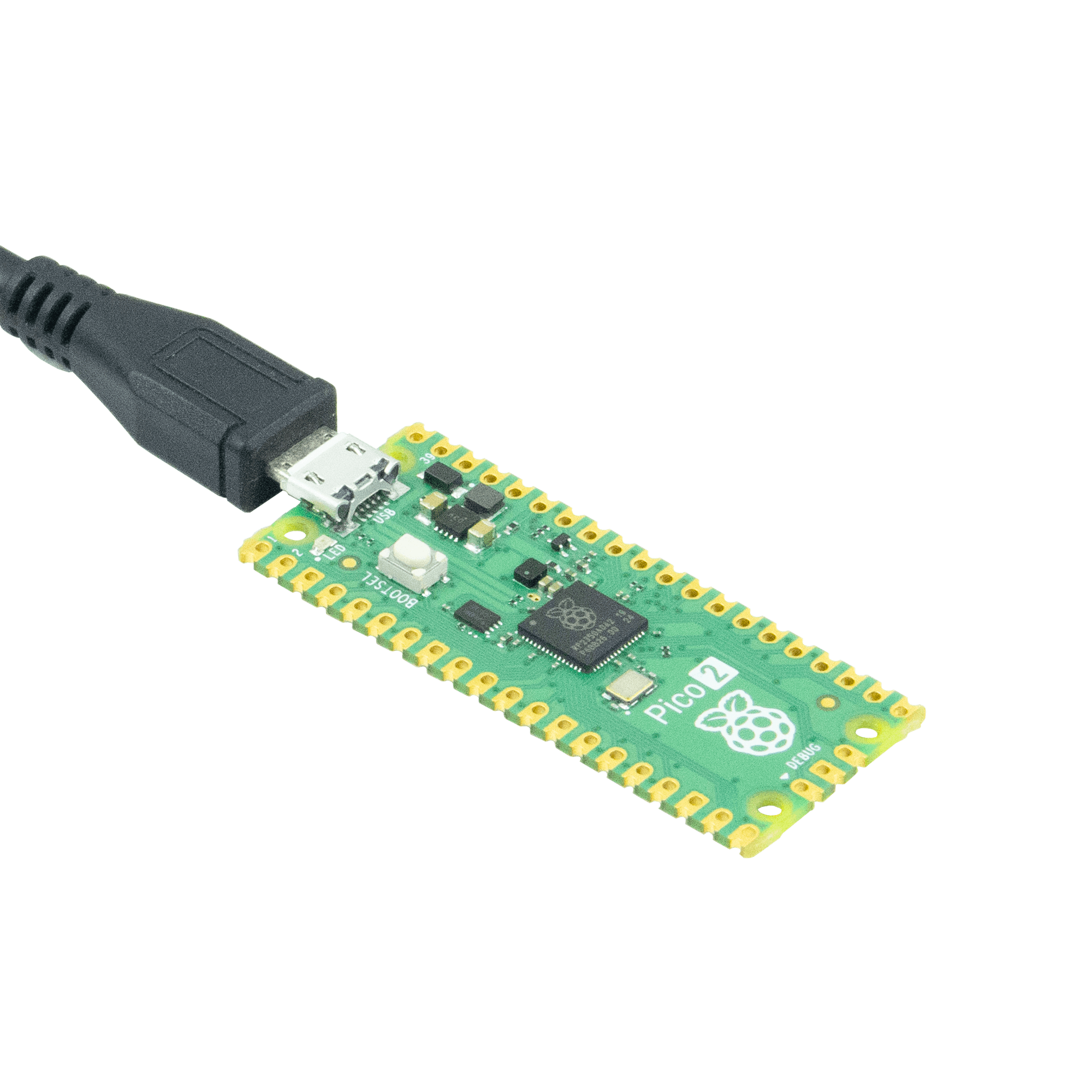
Raspberry Pi Pico 2 incorporates the famous and commonly used USB Micro B receptor for both Power and Data. Just simply get a USB Micro B cable that normally comes with an Andriod phone or power bank to power it and load the program into it. No additional USB to Serial adapter is needed. Neat!
Peripheral Rich MCU

GPIO, ADC, UART, SPI, I2C of Raspberry Pi Pico
Note: The photo shown is Raspberry Pi Pico, Pico 2 is similar.

PWM Pins of Raspberry Pi Pico
Note: The photo shown is Raspberry Pi Pico, Pico 2 is similar.
With 26 GPIO (3.3V) broken out for applications, it has more GPIO pins than Arduino UNO, Arduino NANO, or even Arduino MKR Zero. Among these 26 GPIOs, 3 can be configured as 12-bit ADC with 500ksps (kilo sample per second), 2 x UART, 2 x SPI, 2 x I2C, and up to 16 x PWM pin. Not to forget the 3 Programmable IO (PIO) blocks peripherals which are flexible and user-programmable high-speed IO. It can emulate interfaces such as SD cards, VGA, DVI, and also USB Host.
Note: The Raspberry Pi Pico 2 GPIO runs at 3.3VDC. The maximum voltage that the I/O pins can tolerate is 3.3V. Applying voltages higher than 3.3V to any I/O pin could damage the board.
Large RAM and Flash Size
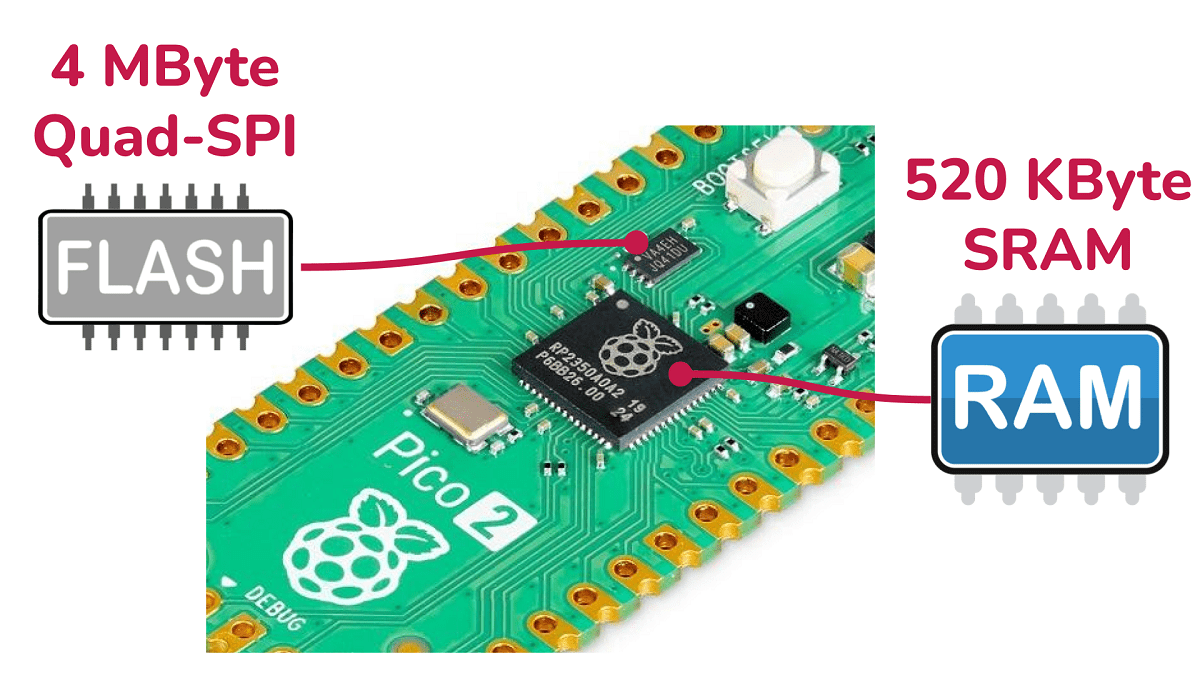
With 4 MByte of external QSPI Flash and 520 KByte of SRAM on Raspberry Pi Pico 2, it will never prompt you about not having enough memory :) Besides, the large size of RAM and Flash also enable Raspberry Pi Pico 2 to be supported with higher programming languages such as MicroPython, CircuitPython, or even Javascript. We believe there will be RTOS (Real Time Operating System) for it too.
Drag and Drop Program Loading Method
With the USB Micro B receptor ready as the physical connection to a computer and the USB 1.1 PHY on the RP2350 (MCU), the Raspberry Pi Pico offers a simple and straightforward program loading method. It is like copying files from one drive to another drive. The Pico appears as USB mass storage when connected to the computer via the USB port! It becomes a USB drive! Write your code and drag the file into that USB drive. After the file is completely copied, the Pico 2 will reboot and run the program :) Easy right?
Support CircuitPython, MicroPython, C, and C++
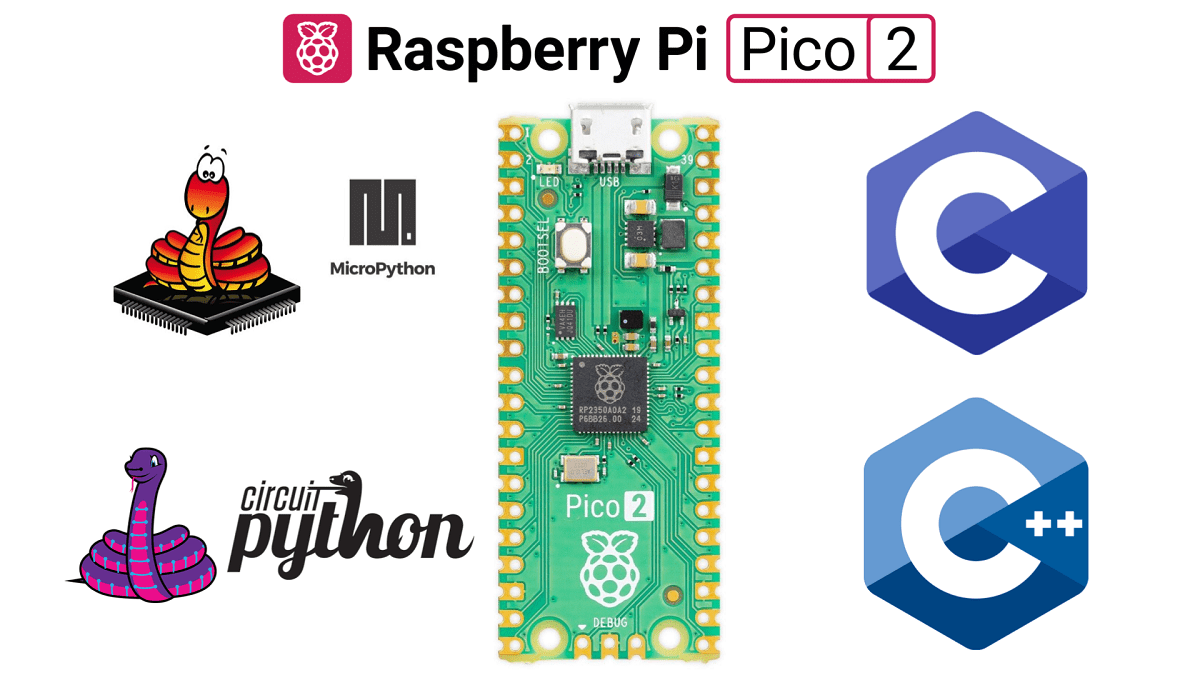
Python is one of the most famous and powerful programming languages nowadays. It is being used in many high-level applications such as AI (Artificial intelligence), DL (Deep Learning), Web and Internet development, and more. Python is used successfully in thousands of real-world business applications around the world, including many large and mission-critical systems. MicroPython is a lean and efficient implementation of the Python 3 programming language that includes a small subset of the Python standard library and is optimized to run on microcontrollers and in constrained environments. You will love it.
Programming loading of MicroPython into Raspberry Pi Pico is effortless. Just connect the Pico to any computer (including Raspberry Pi SBC) via USB, then drag and drop the file onto it. Yes! It is that easy! And Raspberry Pi Foundation has put together a downloadable UF2 file to let you install MicroPython more easily. Visit the Getting Started page by Raspberry Pi to download the necessary file. Or you can get yourself a printed copy of the "Get Started with MicroPython on Raspberry Pi Pico" and start your digital-making journey.
Besides MicroPython, Raspberry Pi Pico 2 also supports CircuitPython, C, and C++ Programming Langauge. Check out the C/C++ SDK for more info. All these programming languages are loaded into Raspberry Pi Pico/2 through USB Mass Storage which enables the simple drag-and-drop method (like copying a file to another drive).
Debugger Ready for Advanced Users
The Raspberry Pi Debug Probe is a versatile and cost-effective tool designed for debugging Raspberry Pi Pico, Pico 2, and other compatible microcontroller development boards. It is an all-in-one USB to serial debug and UART bridge that provides the necessary hardware and cabling for "plug and play" debugging. Get it separately if you need it :)
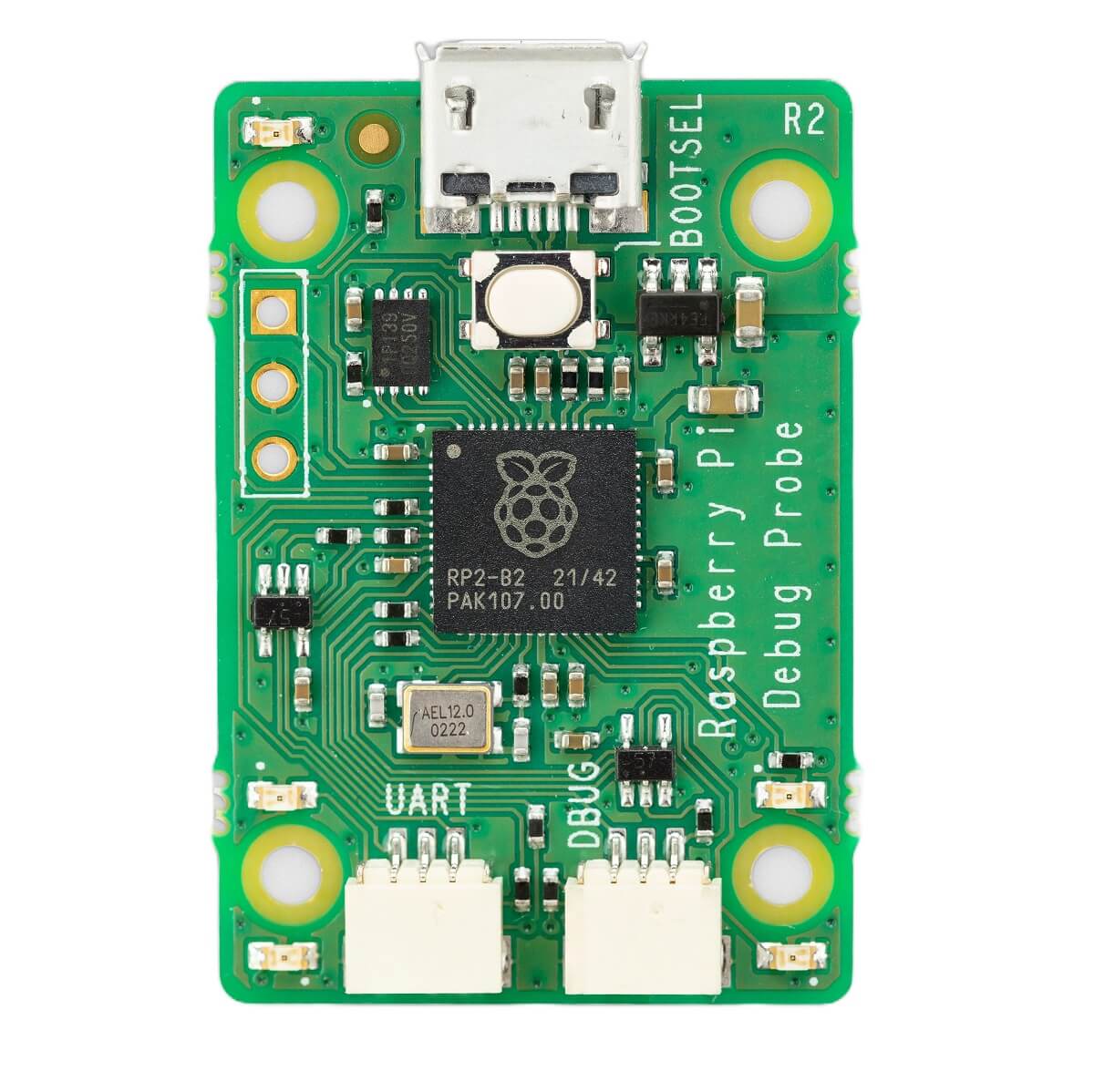
Flexible Power Input

Note: The photo shown is Raspberry Pi Pico, Pico 2 is similar.
The USB Micro B receptor is the main power input to get the Raspberry Pi Pico 2 "running", just connect the USB cable to any USB port and it will supply the power needed for the MCU to execute the program. In the case where you do not want to use the USB port, for example, a battery-powered, or a customized product; do not worry, Raspberry Pi Pico 2 comes with a flexible onboard buck-boost Switch Mode Power Supply (SMPS) that is capable of accepting 2 to 5VDC input and converts it to a stable 3.3V supply for the RP2350 MCU to operate. Simply awesome! The pin is VSYS (Pin 39). With a wide voltage range, Raspberry Pi Pico 2 can be powered by USB, 2 x AA battery, 2 x NiMH AA battery, 1 x 18650 Li-ion battery, or 1 x Cell LiPo battery!
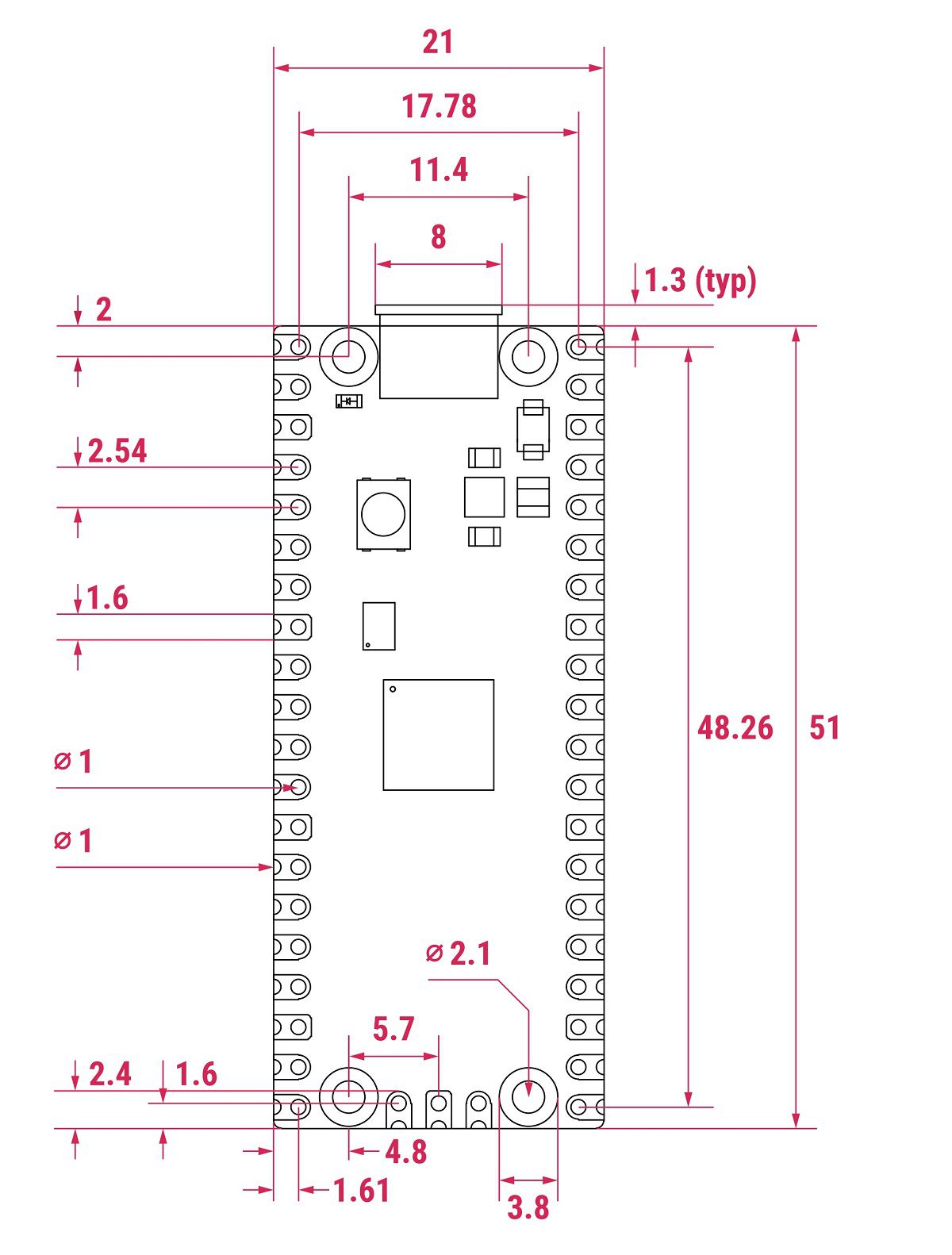
Note: Measurement in mm
If the Raspberry Pi Pico 2 is inserted onto a breadboard, there are two rows of jumper holes on both sides of the PCB for prototyping.
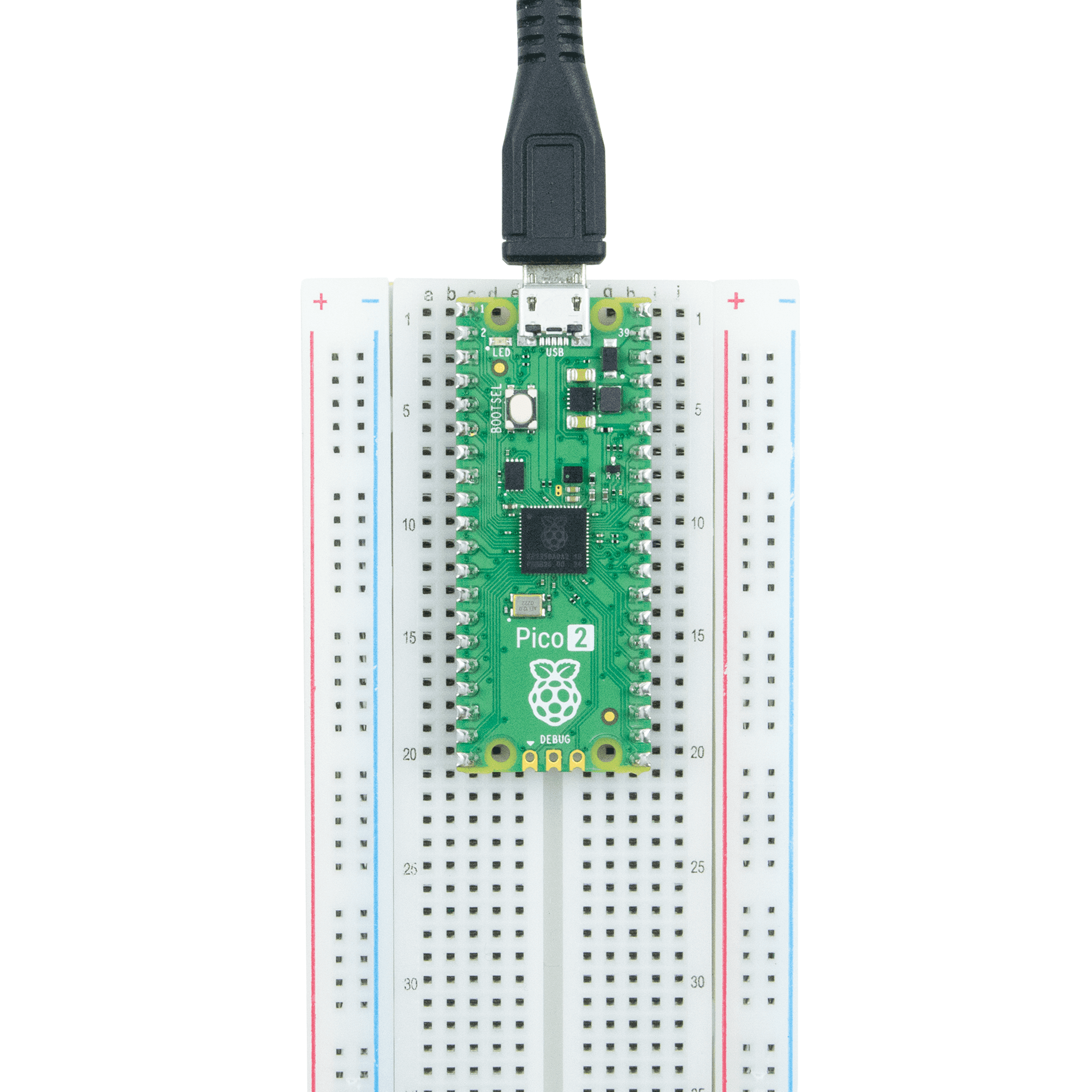
What Will You Need to Get Started?
For those who are still new to Raspberry Pi Pico/2, fear not! It is quite a beginner-friendly microcontroller board. Here are our recommendations for the beginner, maker, and engineer:
- Get the Raspberry Pi Pico 2 with Pre-soldered headers if you want a hassle-free experience to get started.
- A USB Micro B Cable, you will at least need this cable to power and load the program into Raspberry Pi Pico 2.
- Breadboard 8.5x5.5cm (400 Holes), It can help to hold the Raspberry Pi Pico 2 SH and you can extend the GPIO out for prototyping.
- Official Get Started with MicroPython on Raspberry Pi Pico-Color Printed, a comprehensive guide from Raspberry Pi to kickstart with this new MCU platform. Note: Although the manual is written based on Raspberry Pi Pico (earlier version), it is compatible with Pico 2.
- Maker Pi Pico Base is a beginner-friendly development board that extends all the GPIO of Pico to headers, Grove connectors, MicroSD card slot, ESP-01 (WiFi) socket, LED indicators, On-board buttons, RGB LED (Neo-Pixel). It is compatible with Pico 2 SH.

Warranty Period: 12 months
 International
International Singapore
Singapore Malaysia
Malaysia Thailand
Thailand Vietnam
Vietnam
